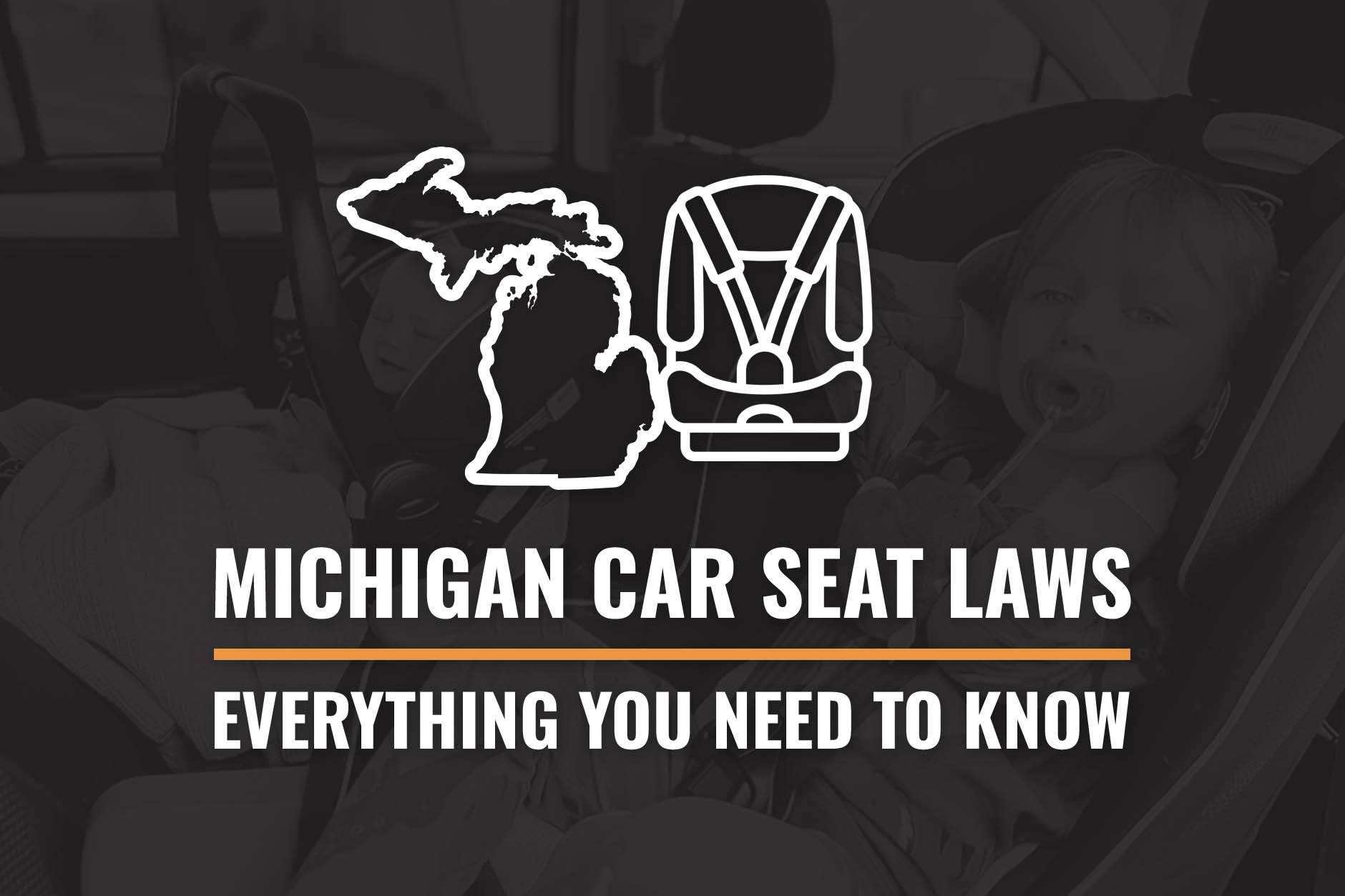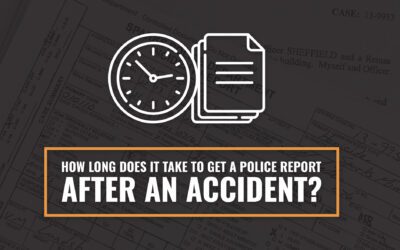
Table of Contents
Keeping children safe on the road is a top priority, and car seat laws play an important role in that mission. Properly following these laws not only protects young passengers but also significantly reduces the risk of serious injury in the event of a car accident. Many parents and guardians, however, have questions, including:
- Can my child sit in the front seat if they’re using a booster seat?
- Can I keep using the same car seat for years?
- What’s the best position for a car seat in different vehicles?
This guide breaks down Michigan’s car seat requirements and other details you need to know when your child rides with you. While accidents are always a possibility, proper car seat use can minimize their severity and keep your child safer.
Overview of Michigan Car Seat Laws
Michigan’s car seat laws are intended to protect young passengers by requiring the use of appropriate restraint systems based on a child’s age, weight, and height. The laws mandate a gradual shift from rear-facing seats to forward-facing seats, then to booster seats, and finally, seat belts for older children.
Key rules include:
- Children under 8 years old or shorter than 4 feet 9 inches must use a car seat or booster seat.
- Children should ride in the back seat whenever possible, especially until age 13, as it is statistically safer.
Following these guidelines will help parents and caregivers protect their children during travel.. Now let’s take a closer look at how state car seat requirements vary according to your child’s age and size.
Michigan Car Seat Requirements by Age and Size
0 – 2 Years Old
Michigan law requires infants and toddlers to remain in a rear-facing car seat until they are at least two years old or exceed the seat’s weight and height limits. Rear-facing seats provide essential head, neck, and spine support, which helps absorb crash forces and reduces injury risk.
Two to Four Years Old
Once children outgrow their rear-facing car seat (usually once they’re between two and four years old), they should move to a forward-facing version with a harness. These seats help to spread crash forces across the strongest parts of a child’s body and reduce the chance of serious injury.
After a child outgrows their forward-facing seat, they should transition to a booster seat. State law requires booster seat use until children are at least eight years old or 4 feet 9 inches tall, whichever comes first. Booster seats ensure that the vehicle’s seat belt fits properly over a child’s shoulder and lap, which is critical for effective restraint. Using a booster seat until they’re tall enough helps prevent injuries to vulnerable areas like the abdomen and neck.
Eight to 12 Years Old
When a child reaches 8 years old or 4 feet 9 inches, they may transition to using the vehicle’s seat belt alone, provided it fits correctly. A proper fit means the lap belt lies snugly across the upper thighs (not the stomach), and the shoulder belt rests comfortably on the shoulder and chest. Even though they may fit in a regular seat belt, experts advise that children under 13 continue to sit in the back seat. The back seat is the safest position for children and reduces their exposure to front-seat airbags in the event of a collision.
Common Mistakes in Car Seat Usage
Even with the best intentions, parents can make car seat mistakes that impact their child’s safety. Here are a few of the most common errors, why they matter, and tips to avoid them.
Transitioning Too Early
Whether it’s switching from rear-facing to forward-facing or moving to a booster too soon, advancing stages prematurely can increase injury risk. The rear-facing position provides optimal head, neck, and spine support, which is critical for young children whose bodies are still developing. Before making a transition, double-check the car seat’s guidelines for height and weight limits, and follow them closely.
Incorrect Installation
Studies show that nearly half of all car seats are installed incorrectly, which compromises their effectiveness. A properly installed car seat should have minimal wiggle room – ideally less than an inch of movement from side to side or front to back. To ensure a secure installation, press down firmly while tightening the seat belt or LATCH system. Many car seats come with built-in leveling indicators and locking clips; these tools are there to help achieve a tight fit, so don’t overlook them.
Loose Harness
The harness is engineered to keep your child secure and limit movement in the event of a crash, but it needs to be properly tightened. Use the “pinch test” to check the harness tightness: if you can pinch any slack at the child’s shoulder, it’s too loose. The harness should be snug but not restrictive, lying flat across the child’s shoulders and chest. Remember to adjust it as your child grows or changes layers of clothing; bulky winter coats, for example, can prevent the harness from fitting properly and should be avoided.
Improper Seat Angle
Most rear-facing seats have built-in angle indicators or adjustable bases to help parents set the correct angle. Pay close attention to these markers during installation and follow any specific recline guidelines for infants and toddlers. Many car seats also offer levelers or recline adjustments to achieve the proper position in different vehicles. Double-check that the seat remains at the recommended angle, especially if you move the seat or reinstall it in a different vehicle.
Failing to Secure the Car Seat Tether in Forward-Facing Seats
The tether strap attaches the top of the car seat to an anchor in the vehicle, preventing the seat from tipping forward in a crash. Using the tether can reduce head movement, lowering the risk of head and neck injuries. Make sure to check your vehicle’s manual to locate the tether anchor and connect it each time you install the car seat in a forward-facing position.
Not Registering the Car Seat
Car seats occasionally have recalls or safety notices issued by manufacturers due to identified defects or updated safety features. Unfortunately, many parents miss these updates because they don’t register their car seats. Registering online or by mail with the manufacturer allows you to receive important recall information or safety notices.
Using Expired or Secondhand Car Seats
Car seats have expiration dates for a reason: materials can degrade over time, compromising effectiveness in a crash. Most seats last around six years, but always check the label for the exact expiration date. Also, avoid using second-hand car seats unless you are certain of their history. Seats that have been in a crash, have missing parts or show signs of wear and tear may not provide adequate protection.
Using the Wrong Type of Seat Belt or LATCH System
For some parents, there’s confusion about whether to use the vehicle’s seat belt or the LATCH system (Lower Anchors and Tethers for Children) when installing a car seat. Generally, both methods are safe, but you should use only one or the other, as instructed in your car seat’s manual. The LATCH system is often easier for secure installation but has weight limits; once your child reaches a certain weight (typically around 65 pounds including the car seat), switch to the seat belt installation method.
Exceptions and Special Circumstances
State car seat laws are supposed to protect children in most everyday travel scenarios, but there are exceptions and special circumstances where the regular rules may not apply.
Medical Exemptions
Some children have medical conditions that make standard car seats challenging or unsafe to use. Michigan law allows for medical exemptions if a licensed healthcare provider documents the need. This documentation should detail why standard restraint methods are inappropriate and, if possible, provide alternative guidelines for safely securing the child. Parents or caregivers should keep this documentation with them whenever traveling to explain the exemption if stopped by law enforcement.
To ensure the child’s safety in these situations, parents may want to consult with a car seat safety technician trained in special-needs car seats. Many hospitals and medical facilities can recommend specialized seats or restraints that provide appropriate support and protection for children with specific medical needs. Even if a child qualifies for an exemption, finding a safe, customized solution is key to minimizing risks on the road.
Taxis and Rideshares
While taxis and rideshare services like Uber and Lyft often fall under slightly different regulations than private vehicles, Michigan requires that children still be properly restrained according to age and size when using these services. Unfortunately, taxis and rideshares don’t typically provide car seats, so parents and caregivers should plan to bring their own.
For infants and toddlers, carrying a lightweight rear- or forward-facing car seat that can be quickly installed is ideal. For older children who require a booster seat, portable or foldable booster seats are available, making it easier to comply with the law while using a rideshare. Many rideshare companies allow drivers to wait briefly for car seat installation, but it’s helpful to inform them in advance that you’ll need extra time.
School Buses
In Michigan, large school buses are generally exempt from car seat requirements. This is because most full-size school buses are designed with “compartmentalization” in mind – this is a safety concept where high-backed, closely spaced, well-padded seats create a protective envelope for children. However, smaller school buses that weigh less than 10,000 pounds may still require car seats for younger children, depending on the setup.
Travel Vehicles (e.g., RVs, Limousines, and Shuttle Buses)
Michigan law does not explicitly mandate car seat requirements for RVs, but child safety advocates strongly recommend using car seats whenever possible to secure children in these vehicles.
Most RVs have seat belts only in the front seats, while the rear seating areas often lack the proper restraints for car seats. If you plan to travel in an RV with young children, look for models with seat belts in the rear seats, as these are better suited for car seat installation. For larger children who have outgrown car seats, always ensure they use seat belts when seated in moving RVs.
Questions? A Michigan Car Accident Lawyer Can Help!
By following these guidelines, staying vigilant about common mistakes, and checking local resources, parents and caregivers can help make each trip safer. However, all the precautions in the world can’t always prevent an accident when you encounter a driver who is drunk, distracted, or simply negligent.
If you or someone you love has been injured in a car accident, then the experienced car accident lawyers at LegalGenius LLC are here to help. We’re committed to fighting for the compensation you deserve, especially when children are involved. To schedule a free consultation, fill out our Ask the Genius™ form or call 1-800-209-4000. Many of our lawyers have children of their own and will fight for your rights when an accident impacts your family.

Attorney Jeffrey Perlman
Attorney Jeffrey Perlamn is the managing partner at LegalGenius, PLLC. He has helped Metro Detroit accident victims recover the compensation they deserve for over 35 years. He believes everyone should have access to justice and the legal system, which is why Attorney Perlman spends his time outside of the courtroom writing informational blogs on the LegalGenius website that are accessible to all.


